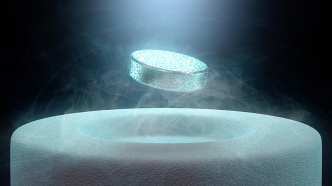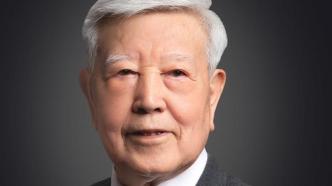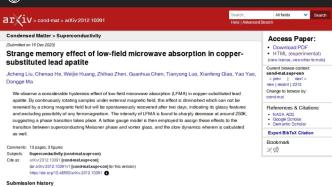
Is there a new discovery in the LK-99 material, which was first disclosed by a Korean scientific research team and claimed to be capable of room temperature superconducting and is considered to be "cool"?

A LK-99 single crystal sample without copper sulfide impurities synthesized by the Max Planck Institute for Solid State Research in Germany.
This material claims to be the world's first room temperature and normal pressure superconducting material, a copper-doped lead apatite composed of Pb10-xCux(PO4)6O.
On December 20, Yao Yao, a professor at the School of Physics and Optoelectronics of South China University of Technology, told The Paper, “We have seen very clear evidence of the existence of a superconducting phase (copper-doped lead phosphate, LK-99 samples).”
The relevant paper was uploaded to the preprint website arXiv last Saturday (December 16, 2023) and is currently open to the public.
However, some experts told The Paper that it has not yet been proven that the relevant materials can superconduct, and the researchers of the aforementioned paper need to disclose more evidence.
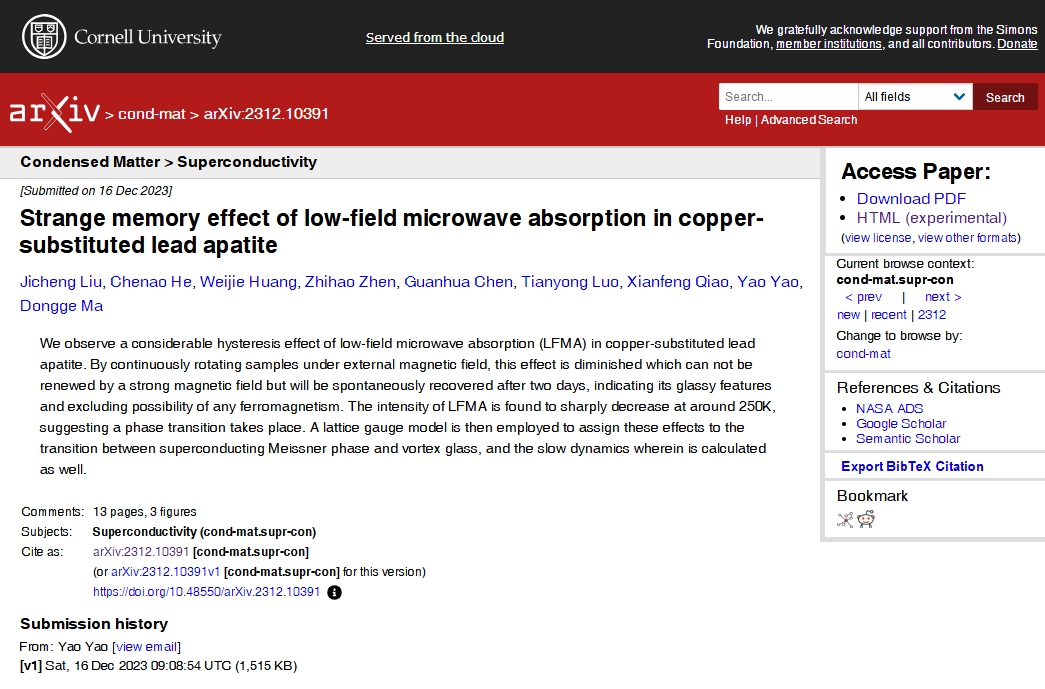
Researchers observed a considerable low-field microwave absorption (LFMA) hysteresis effect in copper-substituted lead apatite samples and suggested that this effect may be attributed to the transition between the superconducting Meissner phase and the vortex glass .
The title of the aforementioned paper is "Strange memory effect of low-field microwave absorption in copper-substituted lead apatite" (Strange memory effect of low-field microwave absorption in copper-substituted lead apatite). There are a total of 9 signed authors, each from South China University of Technology. State Key Laboratory of Luminescent Materials and Devices, Central South University, University of Electronic Science and Technology of China and other units.
Yao Yao said that extraordinary conclusions require extraordinary evidence. Room-temperature superconductors are the dream of many people, but they are likely to first require a paradigm revolution, such as measurement methods. Equipment and measurement methods previously used at low temperatures may not necessarily work at room temperature.

A LK-99 preprint paper jointly published by researchers from the State Key Laboratory of Luminescent Materials and Devices of South China University of Technology, Central South University, University of Electronic Science and Technology of China and other institutions.
According to the paper, researchers observed considerable low-field microwave absorption (LFMA) hysteresis effects in samples of copper-substituted lead apatite. By continuing to rotate the sample under an external magnetic field, this effect weakens and spontaneously recovers after two days. This suggests it has glassy characteristics, ruling out any possibility of ferromagnetism. This effect may be attributed to the transition between the superconducting Meissner phase and the vortex glass.
Yao Yao also said that in the "copper-doped lead phosphate" LK-99 sample currently fired by his experimental team, the content of superconducting components is relatively low, the size is about nanometers, and room temperature superconductivity has not yet been achieved. The current transition temperature of the relevant sample is approximately 250K (-23.15℃). This is much higher than the transition temperature of approximately 140K found in high-temperature superconductors so far.
Yao Yao said that the research team will continue to improve the synthesis process, and it is expected that when the size of the aforementioned sample increases to the micron level, its transition temperature may further increase.
Discovery: "Hysteresis effect" that recovers on its own after two days
"The signal disappeared after the sample transfer for the first time that day. I stayed up almost all night, anxiously wondering whether it could be restored the next day." Yao Yao wrote this when recording the relevant experimental findings.
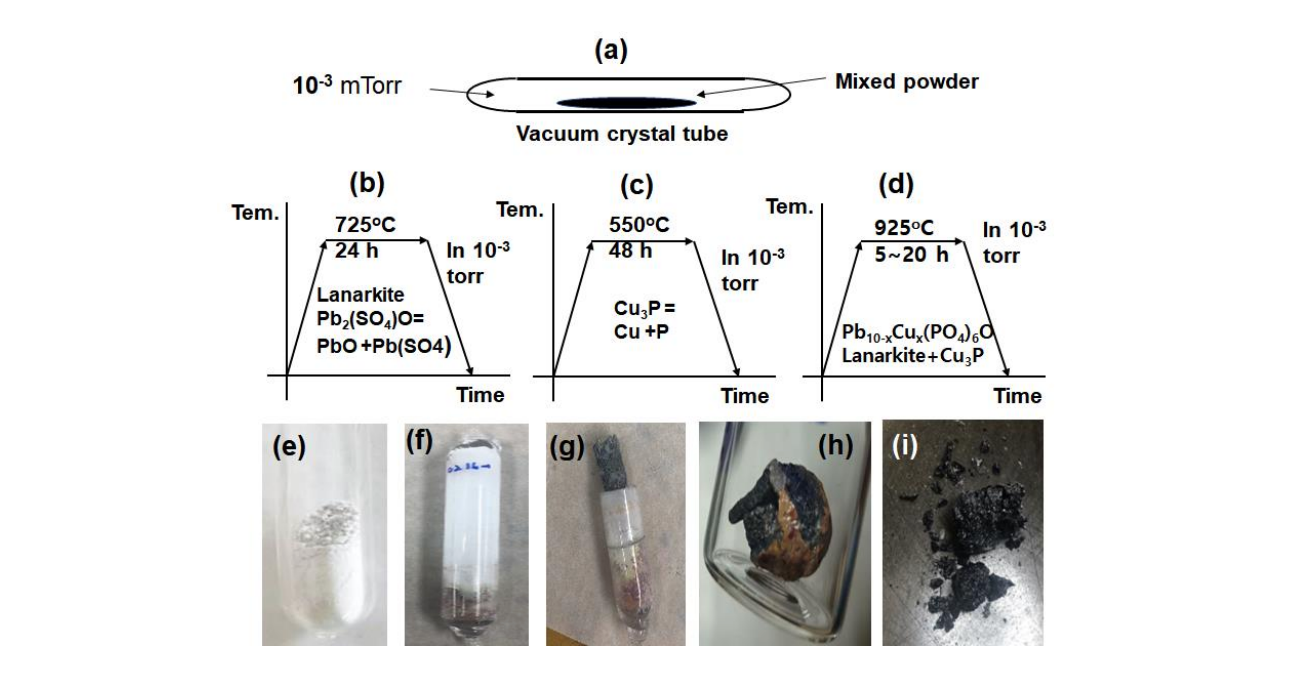
The Korean team's method of "firing" LK-99.
It takes more than half a month to bake a sample each time. After several months of trial and error, Yao Yao saw a surprising experimental phenomenon for the first time in November: the low-field microwave absorption signal disappeared and then reappeared. Under the intervention of the magnetic field, it disappears again and recovers on its own after a day or two.
Yao Yao explained, "After lunch that day, I went to the laboratory. Before the students came, I was adjusting the magnetic field and measuring samples. As a result, no signal was measured in the afternoon that day. Various adjustments were made, but why? No signal could be detected at all, and I was a little frustrated at the time. I came back on Monday and tested again on Wednesday, and the signal was actually detected." In fact, the sample material absorbed the microwaves. After the magnetic field was rotated several times, its absorption was saturated, and the signal weakened and disappeared. A day or two later, the signal reappeared. "This is a sign that the relaxation time of the vortex state is relatively long."
Yao Yao said that the experimental team conducted a very comprehensive study. Superconductivity is a big concept, and in addition to the zero-resistance and completely diamagnetic Meissner effect, "vortex glass" is also part of the superconducting phase. People now divide superconductors into three states: pure Meissner state, vortex glass state (or mixed state), and normal state. "Our main work is to see what kind of effects its glass phase will have as the magnetic field changes and the temperature changes." "Our current results clearly point to the existence of a superconducting phase in this material."
An introduction to Wen Haihu's Chinese paper "Introduction to Research on Flux Pinning and Flux Dynamics of High-Temperature Superconductors" published in Acta Physica Sinica in 2021, American theoretical physicist Matthew PA Fisher in 1989 Published a paper and proposed the "Vortex Glass Theory". Matthew believes that just like in the Meissner state, the phases in the superconductor are coherent, so in the mixed state at low temperature, due to the participation of magnetic flux pinning, the phases in the superconductor may be different, but its The phase correlation in space will be frozen, and thus the magnetic flux system will also be frozen. Because such an image is so similar to that of spinning glass, Matthew defines it as "vortex glass theory."
Yao Yao said that one of the direct evidences for detecting superconductivity is the zero resistance effect and the other is the Meissner effect. The so-called Meissner effect means that the sample has to "resist" an external magnetic field, which is the so-called diamagnetism. Then during the process of scanning the magnetic field, it has memory, and it will form a hysteresis effect, which is the so-called "super "Magnetic hysteresis loop" - shaped like a diamond, commonly known as "diamond curve". "We were the first to detect this thing." "This is the first evidence."
He explained that the hysteresis effect is caused by the vortex glass state of superconducting materials.
Yao Yao said, "The second evidence is that hysteresis loops usually appear in two materials, one is superconducting and the other is ferromagnetic material. We need to eliminate the interference of ferromagnetic materials. The traditional method is Measure the magnetic susceptibility. If the magnetic susceptibility is positive, it is ferromagnetic. If it is negative, rule it out. We use the phase method to measure it and rule out that it is a ferromagnetic material."
"Essentially similar to copper oxide, the specific synthesis process is temporarily confidential."
"Phosphorus is very dangerous, and lead is also very dangerous, so the overall situation is quite rough, because it will explode if you are not careful. On the one hand, there are flammable substances, and lead is also toxic, so it is very troublesome." Yao Yao said, During the process of firing samples, I have experienced furnace explosions and power outages.
Yao Yao said that the core active ingredient of the LK-99 sample is the same as the basic composition of high-temperature superconducting copper oxide, but the difference is that traditional high-temperature superconducting copper oxide does not contain lead and phosphorus. "It is directly a copper oxide. Then some other heavy metal elements are added. Our sample is lead and phosphorus mixed with copper oxide (compound)."
Yao Yao believes that the big problem now is that there are still very few active ingredients in the samples they obtained, and the superconducting content is still relatively low. The size is estimated to be about 200 nanometers, which is too small and has not reached macroscopic size. The next step is to find a way By enlarging the size of the sample to a micron level or even larger macro size, the superconducting properties may become more obvious.
Regarding the results published by other experimental groups, Yao Yao said that the one that is currently being discussed more is the single crystal results of the Max Planck Institute for Solid State Research in Germany. He believes that these single crystals are actually not mixed with copper at all. The LK-99 sample released by the Korean team is darker in color, while the single crystal released by the Max Planck Institute of Solid State Research appears purple and somewhat transparent. The sample in the latest paper published by his team is black.
"The process of doping copper into lead phosphate is not easy to happen. Many people have taken different approaches. We used excessive copper. The cost is that the finished product will inevitably become a mixture. What to do next , that is, to make it as large and purified as possible. Now its ingredients are very complicated. This is also its difficulty." Yao Yao said.
As for the specific improved synthesis process and experimental details, Yao Yao said that they are kept confidential for the time being. "The Korean team has not announced all the processes and details in the paper, and everyone is trying it." The preprint paper has not yet been officially submitted and is currently published for discussion.

Another transparent LK-99 sample.
According to previous reports by The Paper, on the morning of July 22, the relevant research team of the Korean Quantum Energy Research Center Company submitted two similar papers on the preprint website arXiv, claiming that a copper-doped lead phosphorus named LK-99 Stone materials have "room temperature + normal pressure" superconducting capabilities.
Subsequently, many international research teams began to repeat experiments and try to synthesize LK-99 to replicate the experimental results of the Korean team, but most of them declared failures. Some experts said, "LK-99 has nothing to do with superconductivity."
At 17:47 on August 11, a preprint paper submitted by Pascal Puphal, a scientist at the Max Planck Institute for Solid State Research in Germany, stated that they used a technology called floating zone crystal growth to successfully A purple and transparent LK-99 single crystal sample without cuprous sulfide impurities was synthesized. It was measured that its resistance was as high as millions of ohms and showed slight ferromagnetism and diamagnetism, but it was not enough to achieve partial levitation, ruling out its superconductivity. possibility. The team believes that the signs of superconductivity seen in LK-99 can be attributed to cuprous sulfide impurities. The LK-99 crystals they prepared did not contain copper sulfide impurities.
